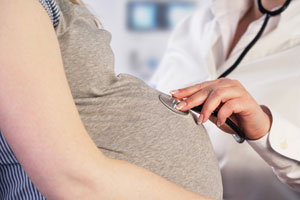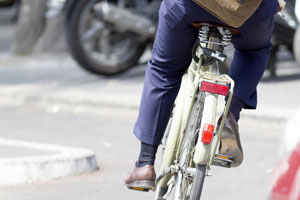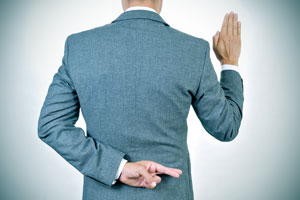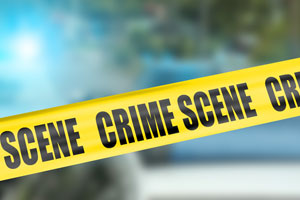Do expert witnesses who rely on scientific studies have an obligation to explain why they did not rely on studies that produced different results? A divided panel of the U.S. Court of Appeals for the First Circuit ruled that they do. While the holding may be questionable, the decision provides guidance to medical and other science-based experts who may be asked about studies that do not support their conclusions.
Facts of the Milward decision
Brian Milward sued the Rust-Oleum corporation (and other paint manufacturers) after he was diagnosed with Acute Promyelocytic Leukemia (APL). Milward spent his adult life working as a pipefitter and refrigerator technician. He contended that exposure to benzene in paint products caused his cancer.
To succeed in his toxic tort case, Milward needed to prove that benzene is capable of causing APL (general causation) and that benzene exposure actually caused his APL (specific causation). Expert testimony is required to make each of those showings.
The court eventually determined that Milward’s expert in general causation would be permitted to testify. Milward retained occupational medicine physician Dr. Sheila Butler to testify regarding specific causation. Rust-Oleum challenged that testimony.
Dr. Butler based her opinion on three theories. First, she testified that there is no safe level of benzene exposure. She did not base that conclusion on epidemiological studies, but on her examination of the impact benzene has on the human organism and the disease process. Dr. Butler concluded that benzene likely caused Milward’s APL because he was exposed to benzene and all benzene exposures are unsafe.
Second, Dr. Butler testified that certain epidemiological studies have established that the exposure to specified quantities of benzene increases an individual’s “relative risk” of developing APL. Since Milward’s exposure was higher than the amounts found to be hazardous, Dr. Butler concluded that benzene exposure was likely the cause of his APL.
Third, Dr. Butler ruled out other potential causes of APL, such as obesity and smoking. Her “differential diagnosis” resulted in the conclusion that benzene caused Milward’s APL because it was the only significant potential cause that she could not rule out.
District Court’s Ruling
Rust-Oleum brought a Daubert motion to exclude Dr. Butler’s testimony. The Daubert decision requires the district court to assure that expert testimony is based on a reliable foundation. The district court granted that motion, which resulted in the dismissal of Milward’s case on summary judgment for lack of proof that benzene caused his APL.
The district court rejected Dr. Butler’s conclusion that every exposure to benzene increases the risk of APL because “it could not be tested with any known rate of error.” Milward did not challenge that ruling on appeal.
The district court determined that Dr. Butler’s “differential diagnosis” theory was flawed because she could not rule out idiopathic causes of Milward’s APL (causes that cannot be scientifically explained), but merely “ruled in” benzene exposure as a cause. The court reached that conclusion despite Dr. Butler’s testimony that every disease has a cause. While it is impossible to rule out unknown causes, when all known causes but one can be ruled out, it is reasonable to believe that the remaining known cause is the most likely cause of the disease. Milward’s attorneys apparently made no serious challenge to the district court’s ruling on appeal and the court of appeals rejected it with little analysis.
Since the “differential diagnosis” theory and the “no safe level of exposure” theory were both rejected without significant legal analysis, the appeal turned on the district court’s exclusion of Dr. Butler’s “relative risk” theory. The district court found that Dr. Butler’s “relative risk” analysis was flawed because she relied on certain epidemiological studies while disregarding a study that reached contrary results. The court of appeals agreed.
Appellate Court’s Analysis
Dr. Butler relied on studies that defined an exposure level to benzene that elevates the risk of acquiring APL. A competing study found no correlation between benzene exposure levels and the onset of APL. Dr. Butler testified that she did not consider the competing study because she believed that there is no safe level of exposure to benzene. She said that she therefore had no need to consider conflicting studies. The court of appeals concluded that Dr. Butler did not use a reliable methodology because she failed to make a reasoned analysis of studies that supported her position and studies that did not.
Milward’s lawyers argued that Dr. Butler’s methodology was sound because she relied upon reliable studies. In their view, the fact that Dr. Butler did not consider every study did not negate the reliability of the studies that supported her opinion. The appellate court, however, considered it “self-evident that, when an expert engages in a relative risk analysis in the manner that Dr. Butler did here, the district court is on firm ground” when it requires the expert to explain why she relied upon certain studies and disregarded those with contrary results.
Whether Milward’s methodology was unreliable because she did not consider a study that conflicted with her opinion is a close question. Since her opinion was supported by studies she considered to be reliable, a different court (like the dissenting judge) might hold that her failure to consider conflicting studies goes to the weight the jury should give to her testimony, not to its admissibility. Indeed, in a similar case, the Court of Appeals for the Seventh Circuit held that “Rule 702 did not require, or even permit, the district court to choose between those two studies at the gatekeeping stage.”
The Dissenting Opinion
Judge Thompson’s forceful dissent might persuade other courts to answer the question differently. Judge Thompson noted that Dr. Butler is an experienced physician who specializes in the treatment of veterans who were exposed to toxic substances during their military service. The judge thought that Dr. Butler was well qualified by her own experience to diagnose the cause of Milward’s APL without reference to any studies at all.
The dissent notes that Dr. Butler did not claim an inability to compare the sole study that challenged her opinion to other studies, but testified instead that she had no need to do so. She regarded her own experience as sufficient to validate the studies upon which she relied. According to the dissent, it was for the jury, not the judge, to decide how much weight to give to an opinion that was grounded both in relevant experience and in scientific literature.
Judge Thompson’s dissent includes “a short primer on expert opinions” that is recommended reading for anyone who wants to have a better understanding of how district judges should exercise their limited “gatekeeping” role when they decide whether expert testimony is admissible under Daubert. The opinion notes that Daubert is meant to be a liberal standard that favors the admissibility of expert opinions. The dissent clarifies the application of Daubert to medical opinions, carefully distinguishing between admissible testimony that a jury might or might not find doubtful (since weighing competing studies is the job of the jury, not the judge) and inadmissible testimony that cannot be helpful to the jury because it lacks a sound scientific foundation.
Implications for Experts
In the case from the Seventh Circuit noted above, the court concluded that the expert should have been permitted to testify that benzene caused the plaintiff’s injuries. That expert explained why the studies that supported his opinion were more scientifically reliable than the studies that found no correlation between benzene exposure and leukemia.
The lesson to learn is that an expert who relies on studies that support her opinion should be prepared to discuss studies that reached conflicting or inconclusive results. The expert should be familiar with the universe of relevant studies and should be ready to explain why the studies upon which she relied are more reliable than those that do not support her opinions. If Dr. Butler had done that, there is little doubt that her testimony would have been admissible.













